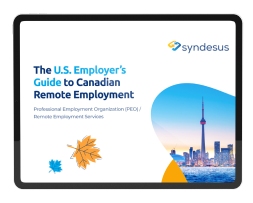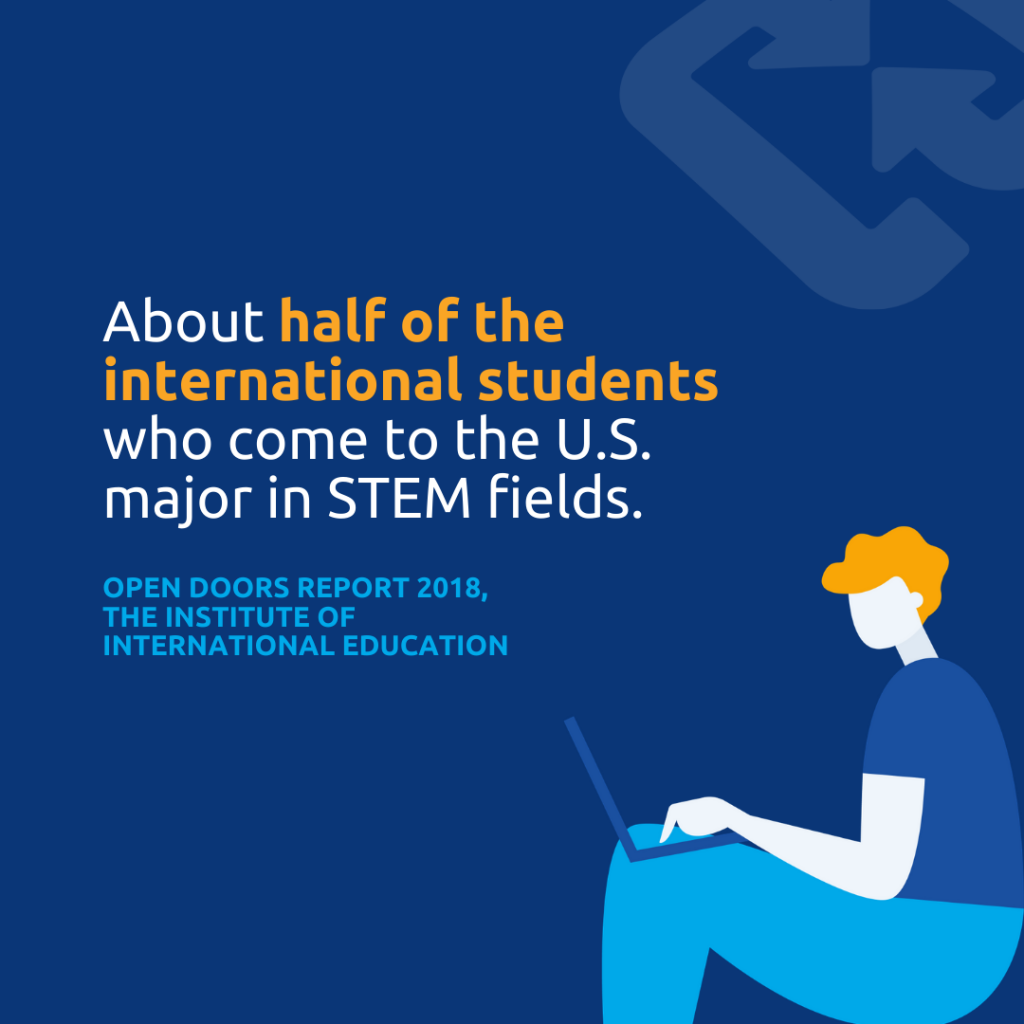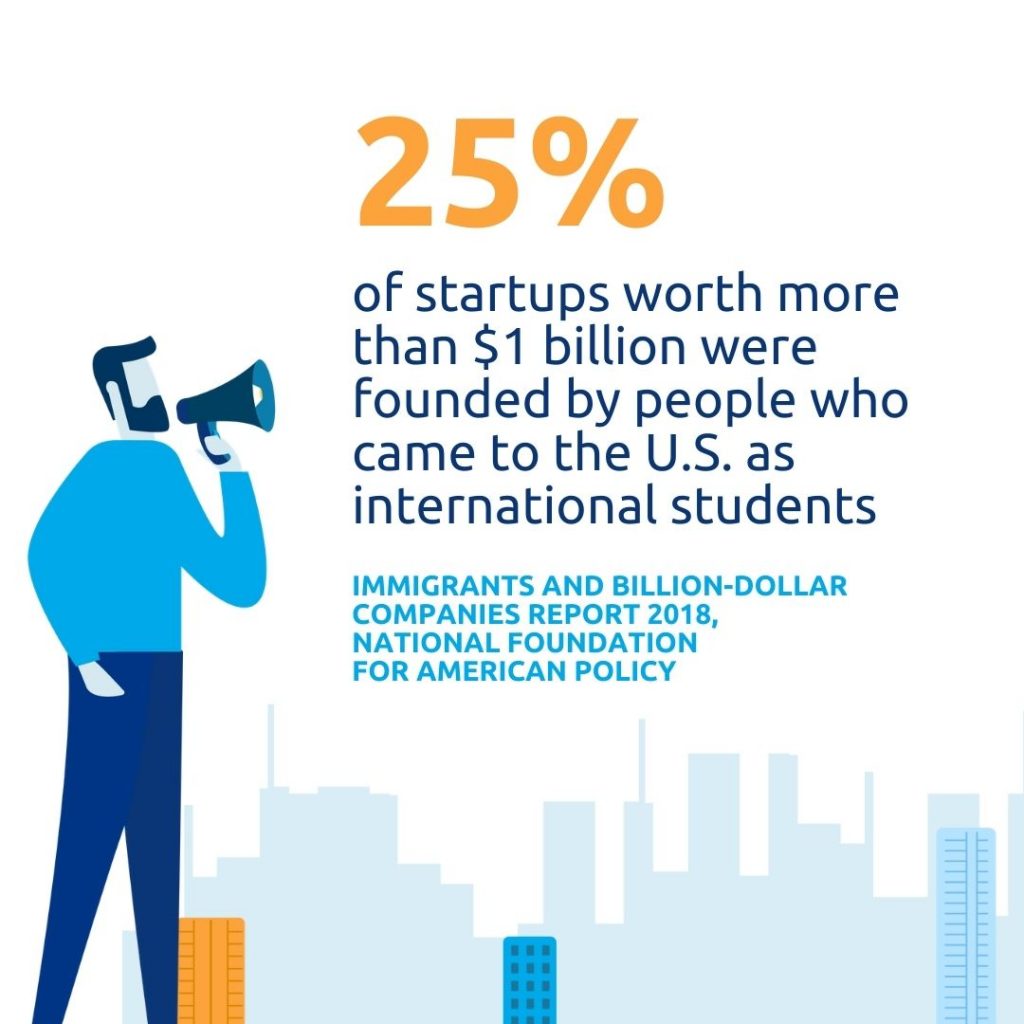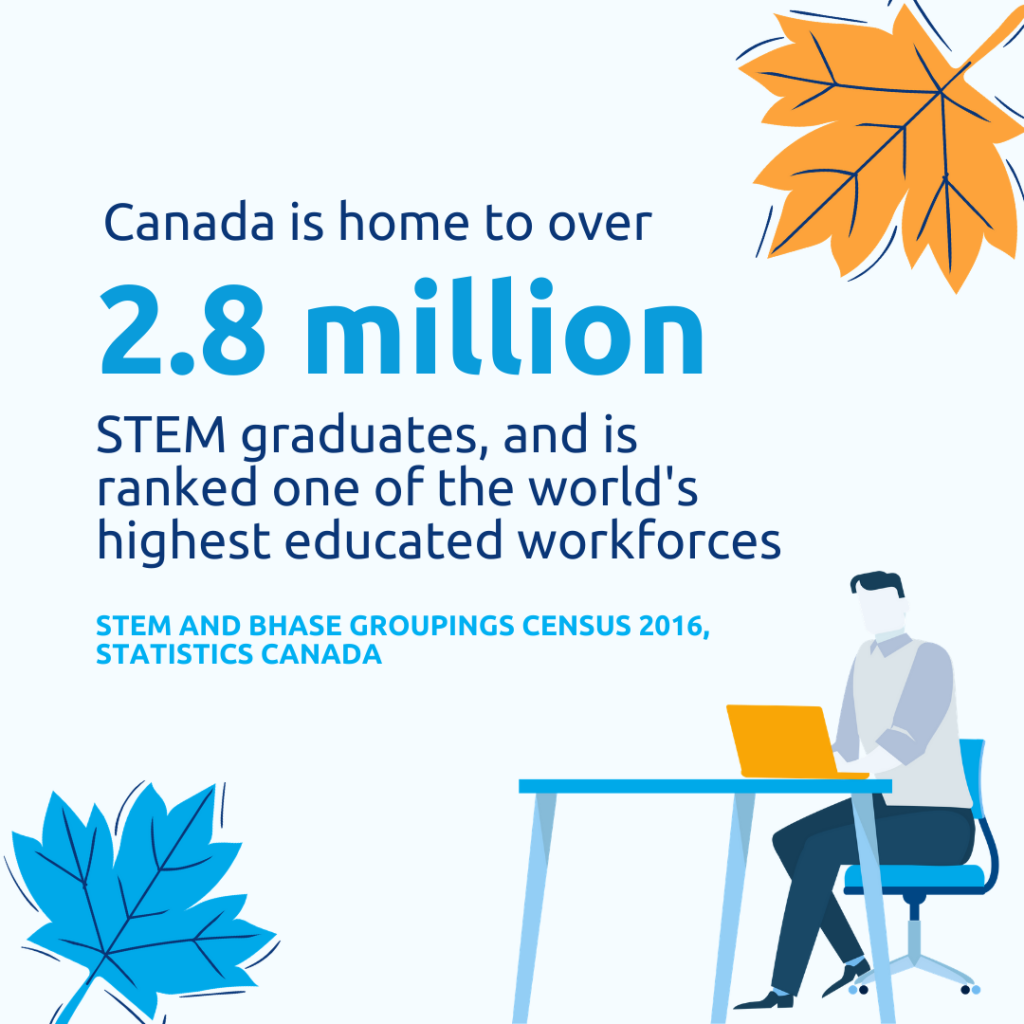The US is a hot destination for international students, which explains why there are more foreign students enrolled in its colleges and universities than any other country in the world.
Approximately 1.1 million international students studied in the US during the 2019-2020 school year. This might sound like a lot, but it’s actually 20,000 fewer international students than the year before, and the Institute of International Education found total international enrollment fell 16% between 2019 and 2020.
Of course, the pandemic has decreased international enrollment, but fewer students have been seeking an American education since 2016. But why?
While the high cost of a US education is one of those reasons, the downstream challenges of the US immigration system also factor into this decrease.
A large number of people come to the US to study in hopes of ultimately getting a related job and creating a life in the US, but with the H-1B visa program looking less and less attractive, other countries are starting to take in international students in higher numbers.
Including Canada.
So let’s talk about this decrease of foreign students in the US, what it means for the US tech sector, and why Canada is so attractive, particularly for STEM students.
Fewer students are pursuing STEM degrees in the US
In the past, the best and brightest among international students stayed in the US to work, but everything from the Trump administration’s travel bans, visa complications, and proposed limits on international students, American enrollment of foreign students has been stumbling.
This decrease could have surprising consequences for America’s tech industry – America is in a race for high-tech global supremacy and the US relies on its universities to educate future engineers and scientists.
About half of international students come to the US to major in STEM fields. For example, foreign students make up 81% of full-time graduate students in electrical engineering, 79% in computer science, and 59% in civil engineering.
Hundreds of thousands of international students graduate from American colleges with STEM degrees, providing a pipeline of high-skilled talent that has fueled America’s tech industry growth.
International students and graduates help America compete on the world stage, but enrollment rates are falling as competing countries step up recruiting efforts.
What does this mean for US tech?
Losing international students is a ding to the US economy — international students contributed $38.7 billion to the nation’s economy and supported 415,996 jobs during the 2019-20 academic year — but more importantly, it threatens the advancement of science and research in the US
In 2016, all three Nobel Prize winners in physics were faculty members at American universities and all three were born outside the US America also risks losing the next generation of tech giants. Nearly 25% of startups worth more than $1 billion were founded by people who came to the US as international students.
A famous example is Elon Musk, who came to the US from South Africa and studied at the University of Pennsylvania before going on to lead SpaceX, Tesla, and other major companies.
Despite all their potential, international students face significant challenges when trying to stay in the US after graduation.
The US doesn’t offer a post-graduate work visa (since OPT is an extension of the F-1 student visa), and there is no specialized pathway to permanent residency for graduates of American schools, so international students rely on OPT and H-1B to work in the US Unfortunately, these are not long-term or reliable options.
So, where are students going instead?
Countries that the US competes with economically are stepping up their recruiting efforts. In 2018 and 2019, both Canada and Australia saw double-digit growth in their population of international students. Canada’s international student population has tripled over the last decade, in part because of tempting policies that streamline pathways to permanent residency for folks who have education and work experience in Canada.
There were 572,415 international students in Canada in 2018 and this number keeps growing — Canada saw an overall increase of 73% between 2014 and 2018. So while the US has long been a destination for international students, many of these students are now looking to Canada.
The benefits of studying at a Canadian STEM program from an employment perspective
Toronto, Vancouver, Montreal, and Ottawa all rank in CBRE’s top 20 tech talent markets in North America, and this has a lot to do with Canada being home to more than 2.8 million STEM graduates and the world’s highest educated workforce.
The Canadian government is committed to investing in critical STEM skills and securing Canada’s future in tech, which means that the demand for STEM workers is predicted to expand. In Ontario alone, there are 35 university programs that offer a variety of paths into the tech industry including software engineering, computer engineering, and computer programming.
There are also many Canadian universities that offer specialized STEM programs.
The University of Waterloo at Southern Ontario is the only school in Canada that has an autonomous vehicle with autonomous-driving software built in-house; Seneca College in Ontario has a four-year program that’s the only aviation technology-based degree program in Canada, and the University of Calgary allows students to conduct in-field testing of technologies like CO2 measurement and environmental monitoring.
Expanding STEM higher education has helped to boost Canada’s technology industry. Currently, Canada is home to more than 41,500 tech companies and nearly one million tech jobs. And this number is growing!
Canadian STEM programs are a strong pathway to permanent residency through employment
Thanks to programs like the Global Skills Strategy Canadian tech companies have an easier time hiring a highly skilled workforce in as little as two weeks. And Canada’s Post-Graduation Work Permit (PGWP) enables international students to work there for a maximum period of three years after graduation.
So, in addition to getting a great education and a job in Canada, students have access to a pathway to permanent residency and possible full citizenship.
For over a century, the United States has led the world in higher education, but immigration rules in the US could prevent international students from starting their careers there, which is a big reason why they’re thinking twice about attending American colleges.
Canada, on the other hand, has thrown its doors wide open to international students, so it’s no wonder that talented folks from the globe are heading north rather than studying in the US.
With this growing tech talent pool in Canada, expanding technology teams in Canada is more exciting now than ever before.
So, if you’re a US employer looking to expand your pool of tech talent for recruiting, Canada may be the place to look. Syndesus can walk you through the logistics of hiring remote tech employees in Canada.
The process is actually easier, cheaper, and faster than bringing a foreign national into the US on an H-1B or even a TN visa.
And if you’re an employee and want to either immigrate to Canada and continue to work, or if you’re a Canadian national, and want to come back home and take your US job with you, Syndesus can walk your company through that process too.
Want to hear more? Book a consultation to chat about your hiring situation.









